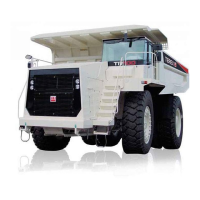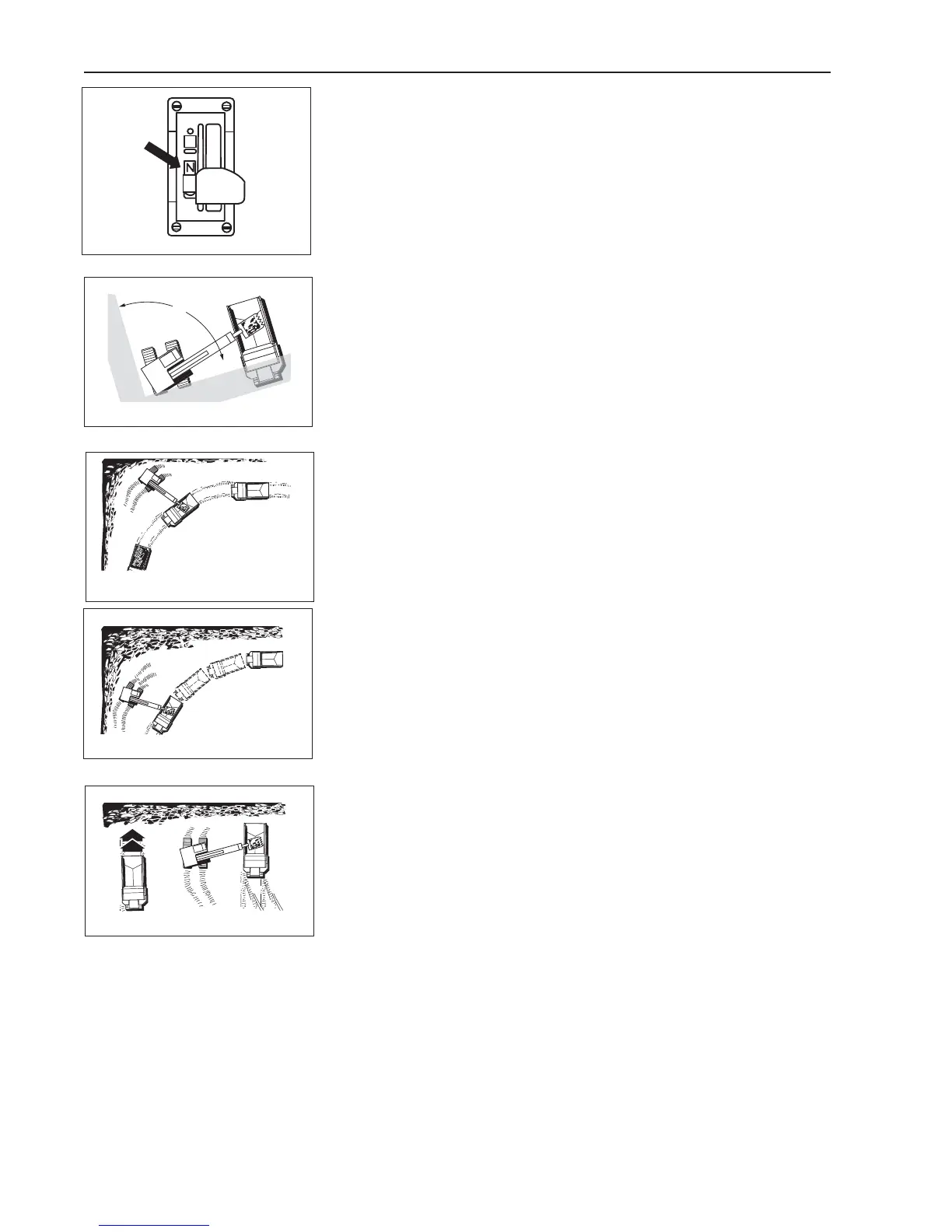5-3
Working the Truck
WORKING THE TRUCK
Off-highway trucks are used on a variety of hauling jobs, from mine overburden
removal to dam building. Every truck operation, regardless of the type of job,
can be divided into four phases; loading, hauling, dumping and the empty return.
Note: After coming to a stop for loading or unloading the truck, shifting the
transmission to "NEUTRAL" will hold the brakes in the applied positions.
Loading
The most common methods of loading trucks are with hydraulic excavators,
rope shovels, and front end loaders. For maximum material movement, the truck
operator must help the loading machine operator hold loading time to a
minimum. The fewer manoeuvres the truck must make to get into loading
position, the sooner loading can start. And the shorter the distance the loading
unit bucket must travel between the cut, or stockpile and the truck body, the
more passes it can make in a given period of time and the quicker the truck can
be loaded.
Ideally, the hydraulic excavator or rope shovel should require 90
o
or less swing to
dump into the truck body for best loading efficiency. Required turning and
backing to position the truck for loading should be held to a minimum. A
common loading method is to have trucks travel a semicircle in the loading area.
This method eliminates all backing. Waiting machines should stay about two
truck-lengths behind the one being loaded to avoid any spillage from the loading
machine bucket or truck body. The operator of the waiting truck is also better
able to judge the best spot for his truck when it is his turn to be loaded.
On some jobs, the loading machine might work most efficiently when trucks are
positioned on both sides of the loader. Thus, while one truck is being loaded,
another can move into position on the opposite side of the loader and the loading
machine can swing over to load the next truck with a minimum of lost time.
Since the truck is usually backed into the loading position with this method, the
operator must be alert and careful while backing.
For fastest, most accurate loading when being loaded by a front end loader, the
truck operator should spot his machine on the most level area and at an angle to
the face of the bank or stockpile. This minimizes loader travel time, particularly
with a raised, full bucket. Where possible, the truck should also locate downwind
of the loader when dusty-type material is being loaded on a windy day. This
practice improves both working conditions and visibility for the loader operator.
A cleanup dozer or small loader is often working in conjunction with the main
loading machine to keep the area clear of bucket spillage for maximum
efficiency of the loading operation. The truck operator must always be alert to
the position of the cleanup machine when entering the loading area to avoid
congestion, and for maximum safety.
1485
Semicircular Loading2040
2041
Stay Two Lengths Behind
Loading Both Sides2042
Minimize Bucket Swing
2039
90˚
MODE

